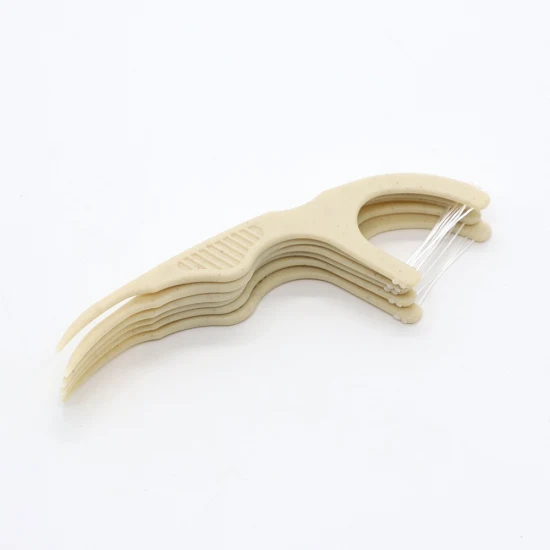The Humble Toothpick: More Than Just a Dental Tool

In the realm of everyday items that often go unnoticed, the toothpick stands out as a simple yet versatile tool with a rich history. Originating in ancient civilizations, toothpicks have transcended their primary dental hygiene role to become a multifunctional accessory in various cultures around the world. This article explores the fascinating journey of toothpicks, shedding light on their evolution, cultural significance, and surprising uses beyond mere oral care.
A Historical Odyssey:
The toothpick’s history dates back thousands of years, with evidence suggesting its use in ancient civilizations such as Mesopotamia and Egypt. Archaeological discoveries reveal that these early toothpicks were crafted from materials like bone, wood, and quills. As societies progressed, so did the toothpick, transforming from a rudimentary oral tool to a symbol of refinement and social etiquette.
In ancient China, toothpicks were often made from bamboo and were considered a sign of good manners. Their use extended beyond dental hygiene to include picking food from communal dishes, showcasing a fusion of practicality and cultural norms. Similarly, in ancient Rome, toothpicks became associated with the elite, reflecting social status and sophistication.
Cultural Significance:
Toothpicks have played a role in various cultural practices, emphasizing the importance of oral hygiene and good manners. In Japan, the use of toothpicks is deeply rooted in the country’s dining etiquette. Traditional Japanese restaurants often provide toothpicks made from high-quality materials, symbolizing attention to detail and hospitality.
In Middle Eastern cultures, toothpicks hold cultural significance as well. They are commonly used after meals, not only for dental hygiene but also as a gesture of respect towards the host. The act of offering toothpicks is a subtle way of indicating the end of a meal and expressing gratitude.
The Renaissance of Toothpicks:
Despite their ancient origins, toothpicks experienced a renaissance in the 19th century. With advancements in manufacturing technology, mass production of toothpicks became possible, making them accessible to a broader audience. Charles Forster, an American entrepreneur, is often credited with popularizing toothpicks by patenting a machine capable of producing them in large quantities.
Forster’s toothpick machine paved the way for the widespread use of disposable wooden toothpicks, forever changing the landscape of oral care and dining etiquette. The convenience and affordability of these mass-produced toothpicks made them a household staple, ensuring their place in daily life for generations to come.
Beyond Oral Care:
While toothpicks continue to serve their primary function in oral hygiene, they have also found surprising applications beyond dental care. Crafters and DIY enthusiasts have discovered the versatility of toothpicks in various projects. The thin, pointed shape makes them ideal for intricate tasks like model building, creating small sculptures, and even fine arts and crafts.
In the culinary world, toothpicks are indispensable tools for assembling appetizers, securing stuffed foods, and testing the doneness of baked goods. They serve as handy skewers for kebabs and can be repurposed to create decorative garnishes for cocktails and desserts.
Toothpick Artistry:
The art of toothpick sculpture has gained recognition as a unique form of artistic expression. Talented individuals use thousands of toothpicks to construct intricate models of famous landmarks, sculptures, and even entire cityscapes. The fragility of toothpicks adds an element of challenge to this art form, requiring patience and precision.
Toothpick artistry has become a subculture within the larger world of sculptural arts. Exhibitions showcasing toothpick creations draw enthusiasts and curious onlookers alike, highlighting the surprising potential of this everyday item.
Environmental Considerations:
As the world becomes more environmentally conscious, the impact of disposable items like toothpicks on ecosystems is a growing concern. Traditional wooden toothpicks are biodegradable, but the demand for single-use plastics has led to the production of plastic toothpicks. The environmental implications of plastic toothpicks underscore the importance of exploring sustainable alternatives.
Some innovative companies are developing eco-friendly toothpicks made from bamboo, a fast-growing and renewable resource. These bamboo toothpicks offer a sustainable alternative to their wooden and plastic counterparts, catering to consumers who prioritize environmental responsibility.
Conclusion:
The toothpick, often overlooked in its simplicity, has proven to be a fascinating artifact with a rich history and diverse cultural significance. From its ancient roots to its role in modern-day dental care and beyond, the toothpick has evolved and adapted to meet the needs of various societies. Whether serving as a tool for oral hygiene, a symbol of etiquette, or a medium for artistic expression, the toothpick continues to play a surprisingly multifaceted role in our lives. As we navigate the future, exploring sustainable alternatives ensures that the toothpick remains not only a practical tool but also a conscientious choice for the environmentally aware consumer
1. What is the origin of toothpicks?
- Toothpicks have ancient origins, with evidence suggesting their use in civilizations such as Mesopotamia and Egypt. They were crafted from materials like bone, wood, and quills.
2. How have toothpicks evolved over time?
- Initially simple tools, toothpicks have evolved from basic implements to symbols of refinement and social etiquette. Mass production in the 19th century made disposable wooden toothpicks widely accessible.
3. Are there cultural significance and etiquette associated with toothpicks?
- Yes, toothpicks hold cultural significance in various societies. For example, in Japan, they are linked to dining etiquette, while in Middle Eastern cultures, offering toothpicks is a gesture of respect towards the host.
4. Who is credited with popularizing toothpicks in the 19th century?
- Charles Forster, an American entrepreneur, is often credited with popularizing toothpicks by patenting a machine capable of mass-producing them.
5. Can toothpicks be used for purposes other than oral care?
- Yes, toothpicks have versatile applications. They are used in crafting, DIY projects, culinary arts, and even toothpick artistry, where intricate sculptures are created using thousands of toothpicks.
6. How are toothpicks used in the culinary world?
- Toothpicks are used in the culinary world for assembling appetizers, securing stuffed foods, testing the doneness of baked goods, and serving as skewers for kebabs. They are also repurposed for creating decorative garnishes.
7. What is toothpick artistry?
- Toothpick artistry is a unique form of artistic expression where individuals use toothpicks to construct intricate models of landmarks, sculptures, and cityscapes. Exhibitions showcasing toothpick creations draw enthusiasts and curious onlookers.
8. Are there environmental concerns with toothpicks?
- Traditional wooden toothpicks are biodegradable, but the rise of plastic toothpicks has raised environmental concerns. Some companies are addressing this by developing eco-friendly alternatives, such as toothpicks made from bamboo.
9. How can toothpicks be used sustainably?
- Choosing sustainable alternatives like bamboo toothpicks can contribute to environmental responsibility. Bamboo is a fast-growing and renewable resource, providing a more eco-friendly option compared to traditional wooden or plastic toothpicks.
10. Can toothpicks be harmful if used improperly? – While toothpicks are generally safe when used for their intended purpose, using them aggressively or improperly can lead to injuries, such as puncturing the gums or damaging dental work. It’s important to use caution and follow proper guidelines when using toothpicks.





